01 Overview of Ramp Management
What is Ramp Management?
Ramp management is the “application of control devices, such as traffic signals, signing, and gates to regulate the number of vehicles entering or leaving a freeway, in order to achieve operational objectives”. Most ramp management strategies are employed to balance freeway demand and capacity, maintain optimum freeway operation, improve safety on the freeway or adjacent arterial street(s), or give special treatment to a specific class of vehicles. Ramp management strategies and the equipment/systems that support them are often implemented in conjunction with other freeway management programs to create operational efficiencies and to assist in the delivery of overall transportation management goals and objectives.
Why is Ramp Management Important?
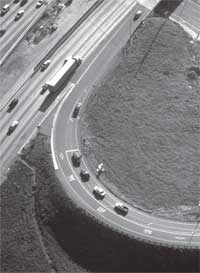 Ramp Management can offset congestion and safety problems that affect efficient and safe operation of traffic on ramps and or the facilities to which they connect. In doing so ramp management helps achieve greater return on transportation infrastructure investment and contributes to the realization of pre-determined goals and objectives. Ramp management also serves as an effective medium through which different agencies can collaborate to address needs more effectively. Since ramps often join facilities that are operated by different agencies, ramp management can break down barriers that exist between agencies, allowing these agencies to work together to more effectively address issues. For instance, a state agency such as the Department of Transportation (DOT) may operate a freeway including adjacent ramps, whereas a local agency such as a city engineering department may be responsible for operating the street or arterial that runs parallel to and connects with the freeway. Using ramp management strategies and techniques, the state and local agency can work together to address traffic problems near the ramp, while remaining cognizant of each other’s concerns. Ramp Management can offset congestion and safety problems that affect efficient and safe operation of traffic on ramps and or the facilities to which they connect. In doing so ramp management helps achieve greater return on transportation infrastructure investment and contributes to the realization of pre-determined goals and objectives. Ramp management also serves as an effective medium through which different agencies can collaborate to address needs more effectively. Since ramps often join facilities that are operated by different agencies, ramp management can break down barriers that exist between agencies, allowing these agencies to work together to more effectively address issues. For instance, a state agency such as the Department of Transportation (DOT) may operate a freeway including adjacent ramps, whereas a local agency such as a city engineering department may be responsible for operating the street or arterial that runs parallel to and connects with the freeway. Using ramp management strategies and techniques, the state and local agency can work together to address traffic problems near the ramp, while remaining cognizant of each other’s concerns.
Ramp Management Goals and Objectives
Ramp management goals, objectives (and the strategies to achieve them) should be consistent with regional transportation goals and objectives and must support the mission and vision of the operating agency. Ramp management goals, objectives and strategies should be defined at the regional level and should fit into the context of the broader transportation planning process including the freeway management program.
The selection and implementation of ramp management strategies must be based on needs. A set of needs must exist that can be addressed through ramp management approaches in order for ramp management to be effective and to justify the investment in these strategies.
Ramp Management Guidance and Support
To better manage and control traffic on freeway entrance and exit ramps, the Federal Highway Administration (FHWA) has developed a comprehensive technical reference providing specific guidance on how to develop, select, implement, operate, maintain and design ramp management strategies. This primer briefly introduces these and other pertinent issues that are addressed in the Ramp Management and Control Handbook. The Handbook can be downloaded at: http://ops.fhwa.dot.gov/freewaymgmt/index.htm.
02 Ramp Management Strategies
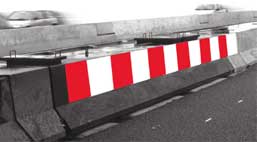 There are four types of strategies that are used to better manage and control traffic on ramps. The advantages and disadvantages of each are different, thereby requiring detailed analysis to determine which are appropriate for satisfying existing problems and conditions. Strategies may be used in isolation or in combination to maximize benefits. The Ramp Management and Control Handbook discusses the four ramp management strategies in detail, giving practitioners the ability to select the strategy or set of strategies most appropriate for existing problems or conditions. Each of the four strategies presented in the handbook are discussed briefly below. Additional information on each strategy can be found in Chapter 5 of the handbook. There are four types of strategies that are used to better manage and control traffic on ramps. The advantages and disadvantages of each are different, thereby requiring detailed analysis to determine which are appropriate for satisfying existing problems and conditions. Strategies may be used in isolation or in combination to maximize benefits. The Ramp Management and Control Handbook discusses the four ramp management strategies in detail, giving practitioners the ability to select the strategy or set of strategies most appropriate for existing problems or conditions. Each of the four strategies presented in the handbook are discussed briefly below. Additional information on each strategy can be found in Chapter 5 of the handbook.
Ramp Metering
Ramp metering is the application of traffic signal(s) installed at freeway entrance ramps to control the rate at which vehicles enter a freeway facility. Ramp meters have been deployed in metropolitan areas all across the United States, and have been in use for over a half century. The purpose of ramp meters is to smooth the flow of traffic entering a freeway from a ramp, allowing more efficient use of existing freeway capacity.
Ramp meters may be programmed to release vehicles one at a time or in a small (usually two-vehicle) platoon to mitigate the impacts on freeway traffic flow of vehicles entering the freeway. A ramp meter may be coordinated with other ramp meters to smooth traffic flow at a point, along a stretch of freeway or for several freeways within a regional network. Additionally, ramp meters may be programmed to optimize freeway flow and/or reduce congestion and its effects (collisions, delay, emissions, and fuel consumption).
Ramp Closure
Ramp closure is the application of gates, barriers, or other physical means to temporary or permanently restrict vehicle access to and from an entrance or exit ramp. In most cases, ramp closure is considered for its safety benefits such as at locations with severe geometric limitations; however, ramp closure may be considered for managing special event traffic or controlling traffic in or around a work zone. Depending on conditions, ramps may be closed to all traffic, or to specific vehicle classes on a temporary, intermittent, or permanent basis. For instance, a ramp near a work zone where there is high percentage of large construction vehicles, may be closed to all non-construction related traffic to eliminate conflicts that may occur between passenger and construction vehicles.
Ramp closures change traffic patterns that have been established over a substantial period of time and therefore should be rarely considered for situations where another ramp management strategy may be successfully deployed. Additionally, before a decision is made to close a ramp, consideration should be given for re-routing traffic that normally uses the ramp. This may include development of detour routes and public information/involvement campaigns to disseminate information to the public. Besides locations with severe geometric deficiencies, ramp closures may also be a viable option for managing special event traffic or controlling traffic in or around work zones.
Special Use Treatments
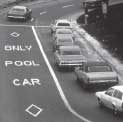 Special use treatments for ramp management focus on providing preferential treatment to a specific class or classes of vehicles and can be applied to either entrance or exit ramps. Special use treatments include exclusive access to ramps for a class of vehicle (e.g., high occupancy vehicle (HOV), emergency, or construction) or special lanes on a ramp for the exclusive use by these vehicle classes. Special use treatments for ramp management focus on providing preferential treatment to a specific class or classes of vehicles and can be applied to either entrance or exit ramps. Special use treatments include exclusive access to ramps for a class of vehicle (e.g., high occupancy vehicle (HOV), emergency, or construction) or special lanes on a ramp for the exclusive use by these vehicle classes.
Special use treatments often require regional support to be successfully deployed and funded. Special use strategies are best undertaken in a coordinated effort with other related and supportive transportation programs. For example, transit management programs may identify candidate ramps where transit vehicle priority considerations may be deployed.
Ramp Terminal Treatments
Ramp terminal treatments (e.g., signal timing, ramp widening, turn lanes, additional storage on arterials, signing, and pavement markings) are geared to improving localized problems at either entrance or exit ramp terminals. Treatments focus on providing solutions to problems at the ramp/arterial intersection. At exit ramp terminals, the strategies can be aimed at reducing queue spillback on the freeway, but may also be aimed at improved arterial flow by limiting the amount of freeway traffic that can access certain areas in the arterial network. At entrance ramps, the strategies generally are aimed at improving coordination between ramp meters and traffic signals, insufficient storage space on the ramp, and driver notification and guidance. The Ramp Management and Control Primer provides further explanation of each strategy discussed above, including conditions under which each are typically applied.
03 Benefits of Ramp Management
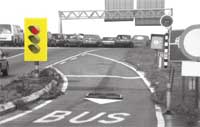 Ramp management programs and strategies improve traveler safety and mobility by reducing collisions that occur on and/or around freeway entrance and exit ramps, and improving conditions that lead to delay. Ramp management strategies are used to address several traffic-related impacts or problems. Most ramp management strategies address problems related to safety, mobility, or a combination of the two. Other strategies are focused on reducing the impacts associated with certain vehicle classes (e.g., construction vehicles, trucks, etc.) as well as special event traffic. Lastly, ramp management strategies can promote local, regional, or state policies. For instance, strategies may be implemented on ramps to promote the use of transit, to encourage carpooling, or provide quicker response for emergency vehicles. Ramp management programs and strategies improve traveler safety and mobility by reducing collisions that occur on and/or around freeway entrance and exit ramps, and improving conditions that lead to delay. Ramp management strategies are used to address several traffic-related impacts or problems. Most ramp management strategies address problems related to safety, mobility, or a combination of the two. Other strategies are focused on reducing the impacts associated with certain vehicle classes (e.g., construction vehicles, trucks, etc.) as well as special event traffic. Lastly, ramp management strategies can promote local, regional, or state policies. For instance, strategies may be implemented on ramps to promote the use of transit, to encourage carpooling, or provide quicker response for emergency vehicles.
Safety
Freeway congestion and safety problems often occur at or immediately upstream of merges areas. Often these events are attributed to the platoons of vehicles that enter a freeway from a ramp. Vehicles that enter a freeway in platoons must compete for gaps in freeway traffic. Also contributing to the problem are vehicles that spill out onto the freeway from an off-ramp that does not have adequate storage to hold all the vehicles that wish to use it, forcing some to stop on the freeway before exiting. A similar queuing problem may also occur on an entrance ramp where queues spill back into the adjacent ramp/arterial intersection, increasing the chance for collisions on the arterial. In both situations, geometric deficiencies may also exist that make typical driving operations more complex. Such deficiencies include horizontal and vertical curves, closely spaced ramps, and inadequate acceleration or deceleration distances. As a result, rear-end, sideswipe, and/or lane change collisions may occur on the freeway, ramp or adjacent arterial.
Ramp management strategies may be used to improve safety and reduce the number of rear end, sideswipe, and lane change collisions. Ramp management can be effective at breaking up vehicle platoons and smoothing the flow of traffic entering a freeway by controlling the rate which vehicles are allowed to enter the freeway. Ramp management may also be used to close ramps, either permanently or temporarily, when severe safety problems and alternative solutions do not exist. Ramp management may also involve widening ramps, or adjusting signal timing to provide the additional capacity needed to adequately hold vehicles to ramps, reducing risk of rear-end collisions.
Mobility
Ramp management may significantly improve conditions on freeways and adjacent arterials, resulting in benefits to mobility and productivity. By managing the rate vehicles are allowed to enter a freeway, practitioners can set limits based on downstream freeway capacity to maintain a predetermined operational objective. Operational characteristics that may be improved leading to greater throughput while maintaining freeway operation include:
- Speed,
- Travel time, and
- Delay.
The Ramp Management and Control Handbook presents a detailed listing of mobility benefits for selected cities in Chapter 1.
Environmental
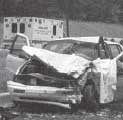 There is a known direct correlation between improved traffic operations and environmental improvements. First, and perhaps most important, are reductions in the amount of emissions released into the environment. As vehicle speeds increase to posted freeway driving speeds, the amount of vehicle pollutants released into the environment decreases. An increase in travel speed also improves fuel efficiency, leading to reduced fuel consumption and cost savings. There is a known direct correlation between improved traffic operations and environmental improvements. First, and perhaps most important, are reductions in the amount of emissions released into the environment. As vehicle speeds increase to posted freeway driving speeds, the amount of vehicle pollutants released into the environment decreases. An increase in travel speed also improves fuel efficiency, leading to reduced fuel consumption and cost savings.
Besides reduced fuel consumption and emissions, ramp management may result in reductions in noise levels and neighborhood impacts. This improves the quality of life for residents in neighborhoods located adjacent to freeways.
Public Perception
Improved safety, improved mobility, and reductions in negative environmental effects, all work together to ease concerns and frustrations of motorists. Additionally, by making these improvements, regional transportation officials and agencies show leadership and action in addressing problems of significant concern to the public. Taking actions that improve these problems or help the public better cope with them help improve the public’s perception of these decisionmakers, making it easier for these groups to acquire the needed funding to develop, implement, operate, and maintain transportation improvements.
04 Potential Impacts
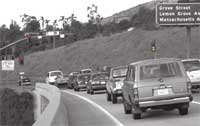 Ramp management is more than a process of simply implementing strategies that will deliver benefits, but rather one that attempts to identify strategies that maximize benefits and minimize negative impacts. Just because ramp management strategies may improve conditions, does not make the strategy acceptable for implementation. Ramp management strategies may unintentionally shift problems from one location to another, reducing the overall benefits. Ramp management strategies have the potential to introduce impacts that will affect the overall success of the freeway/regional transportation program. Potential impacts include: Ramp management is more than a process of simply implementing strategies that will deliver benefits, but rather one that attempts to identify strategies that maximize benefits and minimize negative impacts. Just because ramp management strategies may improve conditions, does not make the strategy acceptable for implementation. Ramp management strategies may unintentionally shift problems from one location to another, reducing the overall benefits. Ramp management strategies have the potential to introduce impacts that will affect the overall success of the freeway/regional transportation program. Potential impacts include:
Diversion
Ramp management strategies such as ramp metering and ramp closure, usually result in a portion of existing traffic diverting from freeways to arterials. This is especially true for motorists who take short trips, since these motorists often elect to take nearby arterials in lieu of waiting in queues that form at ramp meters. Depending on the number and characteristics of routes available to carry diverted traffic, the issue of diversion may or may not be a problem. In situations where routes are not available to carry diverted traffic, operations on nearby arterials may be negatively affected. Besides the increased traffic on arterials, and the associated problems this may cause, traffic diversion may also lead to jurisdictional disputes and conflicts, since ramp and arterial facilities are typically managed by different agencies.
Queue Spillback
Ramp metering also has the potential to form queues that spill back into the ramp/arterial intersection, causing unexpected delays on the adjacent arterial. This typically occurs during periods of high demand, were there may not be enough storage capacity on the ramp to hold traffic waiting at ramp meters. This will obviously affect traffic flow on the arterial, but also increases the chance of rear-end collisions on the arterial. As is the case for diversion, queues that spill back into the ramp/arterial intersection may affect institutional relationships which consequently will make it more difficult to coordinate ramp meters with nearby traffic signal systems.
Equity
Ramp management strategies, such as ramp metering and ramp closure may result in equity issues since such strategies are seen as favoring one group over another. For instance, ramp metering is sometimes viewed as favoring suburban motorists who make longer trips versus those who live closer to urban centers and make shorter trips. This argument is based on the assumption that the suburban motorist lives outside a metered zone and is not delayed by ramp meters when entering a freeway and traveling through the metered zone. The possibility exists that the motorist who lives closer to a downtown area may have a proportionally unfair commute when comparing travel time against travel distance. For ramp closure, equity arguments tend to be focused on the difficulty reaching areas that were once accessible. For instance, business owners often view ramp closure as a detriment to the successful operation of their businesses, because their businesses are no longer visible to traffic that had used the ramp and are often more difficult to access than they were prior to ramp closure.
Emissions on Ramps
 Ramp meters smooth the flow of traffic entering freeways so vehicles can merge with freeway traffic with minimal effect on traffic flow. Reductions in vehicle emissions and fuel consumption on the freeway can be attributed to ramp metering; however, the reductions are partially offset by increases in emissions and fuel consumption from vehicles waiting at ramp meters. At metered ramps, vehicles are subject to delays that result in higher localized emissions than under free-flow ramp conditions. Ramp meters smooth the flow of traffic entering freeways so vehicles can merge with freeway traffic with minimal effect on traffic flow. Reductions in vehicle emissions and fuel consumption on the freeway can be attributed to ramp metering; however, the reductions are partially offset by increases in emissions and fuel consumption from vehicles waiting at ramp meters. At metered ramps, vehicles are subject to delays that result in higher localized emissions than under free-flow ramp conditions.
Public Opposition
Public perception of ramp management is an aspect that is often overlooked but one that is critical to the success of a ramp management program. If the public does not support ramp management efforts, the strategies may fail or not be implemented at all. Opposition toward ramp management may stem from the misconception that strategies result in additional delay, the belief that strategies result in inconveniences or that the benefits of strategies are not well understood. With this in mind, agencies must be proactive in disseminating information to the public as well as demonstrating the many benefits strategies have to offer.
05 Selecting Strategies
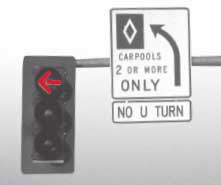 As mentioned previously there are four primary strategies that can be used to manage and control traffic that use ramps. Most strategies address problems related to safety, mobility, or a combination of the two. Other strategies are focused on reducing the impacts associated with certain vehicle classes (e.g., construction vehicles, trucks, etc.) as well as special event traffic. Although there are only four main classifications of strategies, each has a variety of approaches and related strategies that can address specific needs. The variety of ways ramp management strategies can be implemented, in addition to the fact that one or more of these strategies may be used to address a specific problem, makes it difficult to select the strategy or combination of strategies that work best. As mentioned previously there are four primary strategies that can be used to manage and control traffic that use ramps. Most strategies address problems related to safety, mobility, or a combination of the two. Other strategies are focused on reducing the impacts associated with certain vehicle classes (e.g., construction vehicles, trucks, etc.) as well as special event traffic. Although there are only four main classifications of strategies, each has a variety of approaches and related strategies that can address specific needs. The variety of ways ramp management strategies can be implemented, in addition to the fact that one or more of these strategies may be used to address a specific problem, makes it difficult to select the strategy or combination of strategies that work best.
The selection of the “best” strategy for a set of conditions can be more easily accomplished by narrowing the list of available strategies to those that are most appropriate. Once the list of strategies is narrowed, detailed analyses can be undertaken and eventually a “best” strategy can be selected. Narrowing the list of potential strategies before detailed analysis of each strategy begins will lead to considerable time and potential cost savings. To help narrow the list to only those strategies that are appropriate, the Ramp Management and Control Handbook provides a four-step process, which is described briefly below.
Step 1: Revisit Agency Polices, Goals and Objectives
Ramp management strategies should align with an agency’s or region’s transportation management program policies, goals, and objectives. Further clarification and understanding of program goals and objectives will help identify the ramp management strategies that best fit within an agency’s transportation management program. A solid understanding of these goals and objectives will also act as the foundation from which strategies can be selected and applied to address an existing problem.
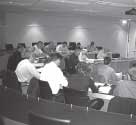 Only the ramp management strategies that support transportation management system policies, goals, and objectives should be considered for implementation. Additionally, ramp management strategies should be viewed as elements of a transportation management program and be applied with other traffic management strategies, where possible, to accomplish transportation goals and objectives. This will “promote the efficient and effective movement of people and goods, to improve the safety of the traveling public, and to improve the environment by reducing both the duration and extent of recurring and nonrecurring congestion on the freeway system.” Only the ramp management strategies that support transportation management system policies, goals, and objectives should be considered for implementation. Additionally, ramp management strategies should be viewed as elements of a transportation management program and be applied with other traffic management strategies, where possible, to accomplish transportation goals and objectives. This will “promote the efficient and effective movement of people and goods, to improve the safety of the traveling public, and to improve the environment by reducing both the duration and extent of recurring and nonrecurring congestion on the freeway system.”
Step 2: Evaluate Current or Baseline Conditions
It is a good idea to evaluate current or future-year baseline conditions prior to implementation to determine what problems exist, and whether ramp management strategies are appropriate. Just because a ramp management strategy is feasible and fits into an agency’s transportation management program does not necessarily make it appropriate to implement. It is certainly possible that existing conditions do not warrant ramp management strategies, or that conditions cannot be adequately addressed through their implementation.
Conditions on the ramp, near the ramp freeway merge point, and along adjacent arterials should be evaluated before selecting a ramp management strategy. The evaluation should determine the nature of the problem(s) and assess whether or not impacts are likely to arise if strategies are implemented. For instance, ramp management strategies can unintentionally “push” problems from one location to another, despite being implemented properly. Evaluating current conditions before strategies are selected will help ensure that the strategies that are selected are the most appropriate given local conditions and observed problems.
Step 3: Match Needs with Identified Strategies
The next step is to match the needs (or problems) identified in step 2 with the conditions that ramp management strategies are known to help mitigate. If needs align with the conditions ramp management strategies are known to help, then strategies can be analyzed in detail, to determine their appropriateness for problems at specific locations. The conditions or problems ramp management strategies are known to help mitigate include:
- Safety – Addresses safety issues at freeway merge points, on the ramp itself or at the ramp/arterial intersection.
- Localized Impacts – Addresses impacts to adjacent neighbor-hoods and those that may arise due construction or special events.
- Congestion – Addresses congestion along the mainline, ramp or adjacent arterials.
- Policy – Addresses transit, HOV or freight issues in which policies have been created.
The Ramp Management and Control Handbook, provides a process that directs readers to consider certain ramp management strategies based on a specific type of problem (e.g., safety, potential impacts, congestion or policy). This process includes Table 1, which maps conditions with the strategies that address them.
Table 1: Ramp Management Strategies Mapped to Needs
| Ramp Management Strategies |
| Need/Problem |
Location/Reason |
Ramp Metering |
Ramp Closure |
Special Use Treatments |
Ramp Terminal Treatments |
| Safety |
Merge Point |
X |
X |
X |
|
| |
Ramp Terminal |
|
X |
|
X |
| |
Mainline |
X |
X |
|
|
 |
| Impacts |
Neighborhood |
X |
X |
X |
X |
| |
Construction |
X |
X |
X |
X |
| |
Special Events |
X |
X |
X |
X |
 |
| Congestion |
Mainline |
X |
X |
|
|
| |
Ramps |
|
X |
|
X |
| |
Ramp Terminal |
|
X |
|
X |
| |
Arterial |
|
X |
|
X |
 |
| Policy |
Transit |
|
|
X |
|
| |
HOV |
|
|
X |
|
| |
Freight |
|
|
X |
|
|
Step 4: Select and Analyze Appropriate Strategies
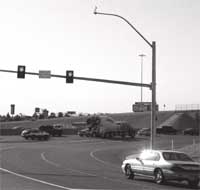 The selection of appropriate ramp management strategies relies heavily on an assessment of the needs that can be addressed through ramp management. If ramp management strategies can be mapped to existing needs (see Step 3), then further consideration should be given to these strategies to determine whether or not the benefits outweigh the negative impacts, and if strategies should be implemented. The fact that strategies can be used to address problems alone does not justify their use. Agencies must also consider whether existing conditions on the freeway, ramp, or arterial warrant any action at all – the operation may already be satisfactory. As such, it may be better to invest funds at other locations to improve conditions deemed unsatisfactory. Additionally, agencies considering ramp management strategies may not have the policies in place, or resources needed to support ramp management implementation. However, if it appears that operations or conditions on the ramp or nearby freeway or arterial facilities are unsatisfactory, policies are in place, and resources available, ramp management strategies may be needed and applicable. The selection of appropriate ramp management strategies relies heavily on an assessment of the needs that can be addressed through ramp management. If ramp management strategies can be mapped to existing needs (see Step 3), then further consideration should be given to these strategies to determine whether or not the benefits outweigh the negative impacts, and if strategies should be implemented. The fact that strategies can be used to address problems alone does not justify their use. Agencies must also consider whether existing conditions on the freeway, ramp, or arterial warrant any action at all – the operation may already be satisfactory. As such, it may be better to invest funds at other locations to improve conditions deemed unsatisfactory. Additionally, agencies considering ramp management strategies may not have the policies in place, or resources needed to support ramp management implementation. However, if it appears that operations or conditions on the ramp or nearby freeway or arterial facilities are unsatisfactory, policies are in place, and resources available, ramp management strategies may be needed and applicable.
06 Intra-Agency Readiness
Before ramp management strategy implementation is seriously considered and systems or equipment are purchased, practitioners must coordinate internally with upper management to determine the feasibility of, and support for, ramp management strategy implementation. This includes close examination of the minimum requirements to successfully deploy and operate ramp management strategies, such as staffing levels and needs, hardware and software needs, budgetary constraints and resources, and policy directives.
Intra-Agency Support and Coordination
 Ramp management strategies require approval and support from upper management and other department managers before implementation can be seriously considered. Support is needed from upper management to secure the resources needed for implementation (e.g., personnel, contracts to procure and install communications, field equipment, workstations, and servers as well as any construction needed), operation and maintenance of strategies. In addition, upper management support is needed to ensure that implemented ramp management strategies will remain an integral aspect of regional transportation directives and that ramp management investments can be expanded to other areas of need, if appropriate. Input from managers of other departments is needed to verify that ramp management strategies fit into current operations and can be seamlessly integrated. Managers of other departments may also identify implementation challenges associated with selected strategies, which can be resolved before strategies are implemented. Ramp management strategies require approval and support from upper management and other department managers before implementation can be seriously considered. Support is needed from upper management to secure the resources needed for implementation (e.g., personnel, contracts to procure and install communications, field equipment, workstations, and servers as well as any construction needed), operation and maintenance of strategies. In addition, upper management support is needed to ensure that implemented ramp management strategies will remain an integral aspect of regional transportation directives and that ramp management investments can be expanded to other areas of need, if appropriate. Input from managers of other departments is needed to verify that ramp management strategies fit into current operations and can be seamlessly integrated. Managers of other departments may also identify implementation challenges associated with selected strategies, which can be resolved before strategies are implemented.
Assuming that the necessary requirements for successful ramp management strategy implementation can be secured and that upper management support has been obtained, practitioners must actively market the benefits of ramp management strategies. As part of this effort, practitioners should solicit and report information to the public as well as the various agencies directly and indirectly affected by implementation. In doing so, practitioners must develop methods and tools to successfully collect and distribute information to these groups.
Staffing
Agencies must determine the impacts that ramp management and control activities have on existing staff levels. Additional staff may need to be hired to deploy, operate, maintain, monitor and/or evaluate ramp management strategies. Agencies should determine the number and type of staff needed to perform required actions.
The appropriate staffing level will depend on a number of factors including the size of the system, the system complexity, the hours of operation, and the specific ramp management strategies chosen. For example, ramp metering will usually require more operations staff in a traffic management center, whereas time-of-day ramp closure will take more field staff.
Contractors may be hired on a full-time or part-time basis to satisfy or supplement staffing needs. Contractors can be used to supplement agency staff or can be used to provide all of the maintenance or operations staff needed. Many combinations of agency and con-tractor staffing are possible. The advantages and disadvantages of various staffing options should be analyzed to select the ones that best fit the needs and budget constraints of the agency.
Training
All staff responsible for operating and/or maintaining systems that support ramp management strategies, whether existing or newly hired, should be trained on:
- Procedures specific to individual systems and devices,
- Operational policies, and
- Testing and calibration methods.
Staff who operate and maintain ramp management strategies should have knowledge, skills, and abilities (KSAs) similar to staff who operate and maintain other traffic management elements. The needed KSAs will differ based on the functions that staff are intended to perform – planning/design, operations, or maintenance. Additionally, staff members need to be trained on how to use special vehicles, such as bucket trucks, to maintain systems and devices that cannot be easily accessed from the ground. Staff members also need to be trained on typical and disaster-specific emergency procedures.
Staff training may be facilitated by step-by-step instructions or hand-books that outline what and when maintenance should be performed. Although most agencies rely on in-house training, workshops, seminars, or other outside means may be used to support training needs. When procuring systems or software, agencies should include a provision within the contract that requires vendors to train staff on how to maintain and operate purchased systems.
Systems and Software Implementation
 Ramp metering requires that agencies deploy systems and software before metering operations can begin. Other ramp management strategies including ramp closure, special use treatments, and ramp terminal treatments can be automated but often use fixed or manual activities not requiring computer systems and software. For example, ramp closures may include an automated system of dynamic signing when the ramp is closed or may include automated or partially automated gate operation that requires computer systems and software. Special use treatments may also include dynamic message signing or detection systems that require computer systems and software. Finally, ramp terminal treatments may include dynamic message signing or new signal system features that will require computer systems and software. Ramp metering requires that agencies deploy systems and software before metering operations can begin. Other ramp management strategies including ramp closure, special use treatments, and ramp terminal treatments can be automated but often use fixed or manual activities not requiring computer systems and software. For example, ramp closures may include an automated system of dynamic signing when the ramp is closed or may include automated or partially automated gate operation that requires computer systems and software. Special use treatments may also include dynamic message signing or detection systems that require computer systems and software. Finally, ramp terminal treatments may include dynamic message signing or new signal system features that will require computer systems and software.
Testing
Systems and software need to be tested before they are operated. For ramp meters, it is critical to make sure all detection, communication, field controller firmware, and central system software is well tested before meters are turned on. Ramp meters and associated equipment need to be installed well in advance of when strategies are slated to take effect. This gives parties responsible for ramp meter implementation time after meters are deployed but before meters are turned on to test each meter to confirm they are working properly.
Data Collection
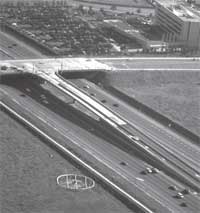 Before ramp management operations begin, traffic volumes, travel times, and other appropriate performance measures should be collected, modeled, and analyzed to estimate and, when combined with after data collection, measure the benefits of implementing the ramp management strategies. Improvements to travel time and travel speeds in the corridor, as well as changes in congestion on the mainline and ramps may be measures of effectiveness that can be used to prioritize locations where equipment will be installed. Depending on the scope of ramp management deployment, this action may need to be completed as much as one year in advance of when the management strategy is slated to begin. Before ramp management operations begin, traffic volumes, travel times, and other appropriate performance measures should be collected, modeled, and analyzed to estimate and, when combined with after data collection, measure the benefits of implementing the ramp management strategies. Improvements to travel time and travel speeds in the corridor, as well as changes in congestion on the mainline and ramps may be measures of effectiveness that can be used to prioritize locations where equipment will be installed. Depending on the scope of ramp management deployment, this action may need to be completed as much as one year in advance of when the management strategy is slated to begin.
07 Inter-Agency Coordination & Outreach
The implementation of ramp management strategies requires coordination among various agencies to establish region-wide policies that guide how strategies are implemented and how associated issues are resolved. Coordination needs to continue beyond the planning stages into the operations stages of ramp management. Several types of agencies with differing agendas will likely be involved with or affected by the operation of ramp management strategies. Therefore, polices should be drafted to ensure equity among motorists and agencies across jurisdictional borders. Policies and operational procedures should be revisited and modified if needed to make sure that agency needs continue to be met. Hardware, software, or field modifications may be needed as well.
Coordination with Enforcement Agencies
Agreements, policies and procedures need to be drafted with local, county, and state enforcement agencies as ramp management strategies are implemented and operated. Ramp management strategies, such as ramp metering and special use treatments, will require active enforcement to ensure that motorists obey signing, striping, barricades, and ramp meter signals to maximize the benefits of these investments. Coordination with enforcement may also be needed when ramps are closed, due to an emergency, or when severe weather conditions threaten the safety of motorists.
Enforcement is particularly important at the initial ramp meter turn on and the weeks that follow. High visibility of officers during this timeframe will help ensure compliance with the new traffic control devices and will help to reduce driver confusion and the number of crashes attributed to these systems. However, excessive enforcement may negatively affect driver behavior and may directly affect operations on the ramp as officers pull vehicles over on the shoulder. City or State traffic ordinances may need to be amended to ensure that ramp management strategies can be effectively enforced and to dictate penalties for non-compliance.
Coordination with Local Traffic Operations Agencies
 Coordination with municipal and county traffic operations departments is needed to ensure that ramp management operations fit well with arterial operations. During the planning and implementation phases, coordination focused on the selection, implementation, and design of ramp management strategies. Memoranda of understanding (MOU) may have been drafted during the planning or implementation phases. If not, MOUs, letter agreements, or less formal agreements should be considered early in the operational phase. Multi-agency agreements will show region-wide commitments to ramp management strategies as a congestion mitigation strategy. It is important that agreements consider agency roles and responsibilities, including how traffic signals near metered ramps are operated. Agreements should also include provisions on data sharing, especially if control strategies like ramp metering will interconnect with the traffic signal system and other traffic management elements (e.g., closed circuit television) operated by either the DOT or local agency. Coordination with municipal and county traffic operations departments is needed to ensure that ramp management operations fit well with arterial operations. During the planning and implementation phases, coordination focused on the selection, implementation, and design of ramp management strategies. Memoranda of understanding (MOU) may have been drafted during the planning or implementation phases. If not, MOUs, letter agreements, or less formal agreements should be considered early in the operational phase. Multi-agency agreements will show region-wide commitments to ramp management strategies as a congestion mitigation strategy. It is important that agreements consider agency roles and responsibilities, including how traffic signals near metered ramps are operated. Agreements should also include provisions on data sharing, especially if control strategies like ramp metering will interconnect with the traffic signal system and other traffic management elements (e.g., closed circuit television) operated by either the DOT or local agency.
The level of formality needed in intra-agency agreements depends on the agencies and regions involved. If the agencies involved typically use formal MOUs, then an MOU should be drafted for ramp management. If the agencies involved do not have a history of working together, a formal agreement, such as an MOU, may also be warranted. On the other hand, if the agencies involved typically use letter agreements or other less formal agreements, those less formal mechanisms should be used for ramp management agreements.
Coordination with Local Transit Agencies
Coordination with transit agencies is needed to determine the feasibility of implementing special use strategies at ramps and to understand transit needs regarding other ramp management strategies. Transit may be negatively affected by ramp closures and ramp metering if provisions, such as special use treatments, are not implemented. Coordination is needed to develop strategies that minimize negative impacts on transit or enhance transit operations.
After strategies are implemented, coordination with the transit agencies involved should include reviewing the operation of the ramp management strategies to make sure impacts to transit are acceptable or to see how transit operations can be further improved.
08 Public Information & Outreach
Public support and understanding of ramp management strategies are critical to ensure that ramp management strategies are successful in meeting their objectives. Opposition to the implementation of ramp management strategies may pose a challenge that can significantly delay or eliminate implementation. Therefore, public information and outreach is typically performed to solicit support from the public, affected agencies, and internal stakeholders.
Public information campaigns are also important from the aspect of obtaining public input. Public input is needed and valuable in evaluating and selecting ramp management locations and what ramp management strategies to implement at those locations. Public input is also helpful in establishing program goals and objectives.
 Public information and outreach should target local leaders, motorists, the media, and external agencies thought to have an affect on, or be affected by, ramp management strategy selection. At a minimum, support and input from these groups are needed to successfully implement ramp management strategies. Information solicited from these groups will be used in part to properly plan how these strategies will be implemented and operated. Public information and outreach should be tailored to the specific needs and concerns of each group affected by ramp management strategy implementation. Likewise, the reasons for and benefits of ramp management strategies need to be expressed in terms that each group can easily understand. Public information and outreach should target local leaders, motorists, the media, and external agencies thought to have an affect on, or be affected by, ramp management strategy selection. At a minimum, support and input from these groups are needed to successfully implement ramp management strategies. Information solicited from these groups will be used in part to properly plan how these strategies will be implemented and operated. Public information and outreach should be tailored to the specific needs and concerns of each group affected by ramp management strategy implementation. Likewise, the reasons for and benefits of ramp management strategies need to be expressed in terms that each group can easily understand.
Local Leaders
Local leaders (e.g., elected and appointed officials) can be valuable advocates of, or powerful opponents to ramp management strategies. It is important to determine whether local leaders are predisposed to either advocacy or opposition to the proposed strategies and develop an outreach program that targets both the advocates and the opponents. Outreach to advocates will mobilize their support for ramp management, while outreach to opponents will help address concerns and misconceptions.
Motorists
Public information campaigns targeted at motorists, as well as groups of the public, usually convey the reasons for and expected benefits of ramp management strategies, provide information that explains how strategies work, and dictate what, if any actions motorists need to take to comply with the new strategies. Motorists’ initial impressions of ramp management strategies, such as ramp metering and ramp closure, may be negative because negative aspects associated with these strategies are more easily observed than their benefits. What motorists often fail to understand is that the negative aspects are in most cases more than completely offset by the improvements to mainline speed, delay, and safety. Therefore, public information campaigns should emphasize how strategies work, the reasons why strategies are being considered, and the benefits likely to be observed. By doing so, motorists’ negative perceptions of ramp management strategies may be mitigated.
Media
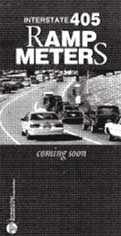 The media can provide a mechanism through which positive support for ramp management strategies can be obtained. Electronic and print media can be used to express the benefits and reasons for ramp management strategies before and after they are deployed. For example, before ramp meter systems are implemented or expanded it is important that the local media be notified of program goals, objectives, and benefits well in advance of when meters are expected to be turned on. The media can provide a mechanism through which positive support for ramp management strategies can be obtained. Electronic and print media can be used to express the benefits and reasons for ramp management strategies before and after they are deployed. For example, before ramp meter systems are implemented or expanded it is important that the local media be notified of program goals, objectives, and benefits well in advance of when meters are expected to be turned on.
Although the media can aid in acquiring public support, the media can also be obstructive if not handled properly. If the benefits of ramp management strategies are oversold and unrealistic, credibility of the implementing agency may be questioned.
09 Operating & Maintaining Strategies
Ramp management strategies must be actively operated and maintained to maximize benefits, and reduce the negative impacts that result from malfunctioning or broken equipment. The inability to operate and maintain systems and equipment will over time result in decreased performance and safety. Therefore, it is critical that personnel responsible for operation and maintenance of ramp management strategies be provided the proper training so systems and equipment can be operated effectively and maintained accordingly.
Operating Ramp Management Strategies
Ramp management operations should support, rather than conflict with, the overall performance of the transportation management program. All staff responsible for the operation of ramp management strategies should be familiar with established transportation management and ramp management policies and procedures and should be able to reference the operational policies and procedures resources when needed.
Maintaining Ramp Management Strategies
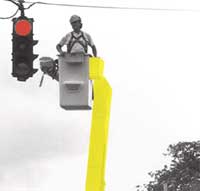 Systems, software, and other devices that support ramp management strategies must be routinely maintained to ensure adequate performance and operational stability. This involves replacing defective parts, cleaning components, updating software, logging repairs, and testing equipment. When systems or devices fail, staff must be available to fix problems in a timely manner to reduce the impact on and exposure to the public. Any delay in fixing problems will result in greater public skepticism of the effectiveness of ramp management strategies. In short, timely maintenance of ramp management strategies ensures the effectiveness of those strategies and furthers the basic goals and objectives of those strategies, such as improving safety and reducing congestion, vehicle emissions, and fuel consumption. Systems, software, and other devices that support ramp management strategies must be routinely maintained to ensure adequate performance and operational stability. This involves replacing defective parts, cleaning components, updating software, logging repairs, and testing equipment. When systems or devices fail, staff must be available to fix problems in a timely manner to reduce the impact on and exposure to the public. Any delay in fixing problems will result in greater public skepticism of the effectiveness of ramp management strategies. In short, timely maintenance of ramp management strategies ensures the effectiveness of those strategies and furthers the basic goals and objectives of those strategies, such as improving safety and reducing congestion, vehicle emissions, and fuel consumption.
Systems that are maintained according to vendor requirements will last longer than those that are not maintained as often. Regularly scheduled maintenance activities will allow agencies to use systems up to (or perhaps even beyond) their designed life cycle and maximize benefits from their investments. However, even the best maintained systems will have unexpected component failures. When failures occur, systems need to be repaired as soon as possible. In emergency situations, systems should be repaired immediately so operations can be restored. Therefore, agencies must define responsive and emergency maintenance procedures, so operations of failed equipment can be restored in a timely manner.
Operations and Maintenance Tools
Operations and maintenance staff need tools to effectively operate, maintain, and troubleshoot ramp management strategies. Staff members need software to improve operations and to improve staff efficiency. Additionally, software helps reduce operator workload which in turn helps operators work more effectively and think more clearly. Maintenance personnel require the proper diagnostic equipment and tools to maintain ramp metering systems, as well as other ramp management systems including automated gates and signs. Such equipment may include properly equipment maintenance vehicles and ruggedized laptops with software loaded that will help make adjustments to systems in the field. Maintenance personnel will also need tools that identify and troubleshoot problems before they occur or become larger. These tools may consist of equipment, such as battery testers, devices to test communications bandwidth, and/or vendor-supplied manuals.
Maintenance Needs and Priorities
Maintenance needs will depend on the strategies that are implemented and the extent to which ramp strategies have been deployed. Strategies implemented at one or a few ramps will obviously require much less maintenance than strategies implemented along an entire corridor or in multiple corridors. Similarly, strategies that require computer systems to be in place, such as ramp meters or automated gates for ramp closure may require that software be updated or reconfigured when errors occur.
Maintenance needs should be prioritized based on the importance of each system in meeting the overall goals and objectives of the transportation management system. Response maintenance on devices deemed mission critical (i.e., those that are needed to keep the transportation system operating correctly) or critical to safety should be the highest priority and failed equipment needs to be replaced or repaired immediately. Response maintenance on non-mission critical devices should be the next priority, followed by preventative maintenance.
10 Performance Monitoring & Measures
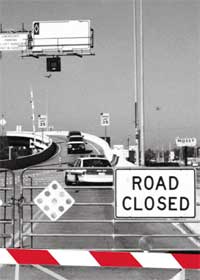 Effective ramp management relies on the ability to monitor the effects of any action taken to manage the movement of vehicles on entrance and exit ramps. Performance monitoring ensures that selected strategies are operated effectively, and that they are achieving their intended objectives. Feedback on system performance is critical to evaluate and adjust the day-to-day operation of the strategy. Active performance monitoring provides a necessary foundation for active system management. The public will be more confident in the operation of the strategy and be more supportive of ramp management overall with an actively managed system that is monitored with performance reported periodically. A full assessment of ramp management strategies should be performed periodically. This self-assessment will provide detailed performance results that will help identify where improvements are needed and measure employed strategy benefits. Effective ramp management relies on the ability to monitor the effects of any action taken to manage the movement of vehicles on entrance and exit ramps. Performance monitoring ensures that selected strategies are operated effectively, and that they are achieving their intended objectives. Feedback on system performance is critical to evaluate and adjust the day-to-day operation of the strategy. Active performance monitoring provides a necessary foundation for active system management. The public will be more confident in the operation of the strategy and be more supportive of ramp management overall with an actively managed system that is monitored with performance reported periodically. A full assessment of ramp management strategies should be performed periodically. This self-assessment will provide detailed performance results that will help identify where improvements are needed and measure employed strategy benefits.
Performance monitoring should be tied to the region’s transportation goals and the goals of the ramp management program. This is accomplished by defining performance measures that best represent previously defined goals. In addition to evaluating the overall effectiveness of ramp management strategies, performance measures are useful for identifying the severity and location of problems. Selection of good performance measures includes consideration of:
- Goals and objectives,
- Data needs,
- Decision-making process, and
- Stakeholder involvement.
Though there are many different categories of performance measures, a few of the most common deal with safety, mobility, travel time reliability, environmental effects, facility throughput, and public acceptance.
Results of performance monitoring should be documented in a format that is suitable for agency personnel and management, decision makers, or the public. Reporting is the link between performance monitoring and strategy refinement. It is also instrumental in showing the benefits of ramp management and building support for ramp management activities.
|